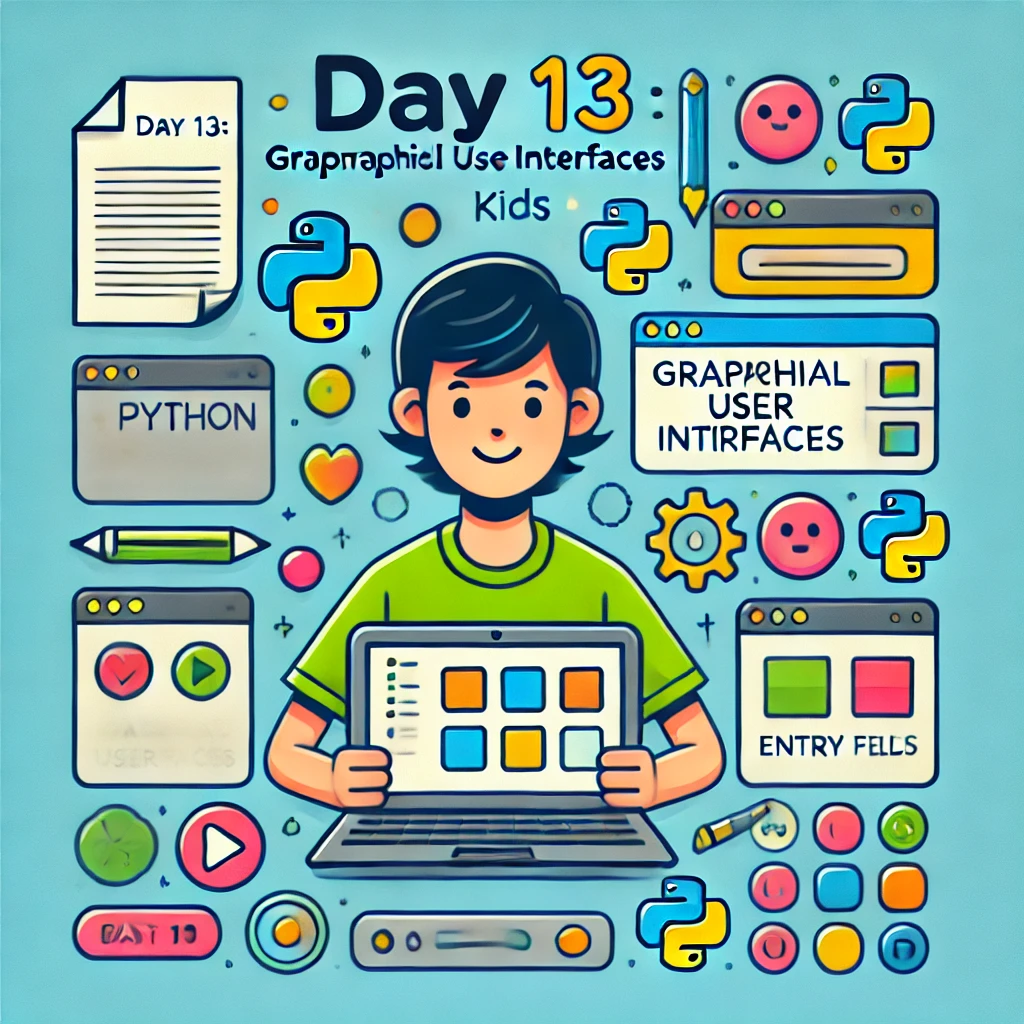Welcome back! Yesterday, we learned about inheritance and polymorphism in Python. Today, we’ll dive into graphical user interfaces (GUIs) and learn how to create simple GUIs using the tkinter library. By the end of this day, you’ll know how to build basic GUI applications. Let’s get started!
What is tkinter?
tkinter is Python’s standard GUI (Graphical User Interface) package. It provides a fast and easy way to create GUI applications.
Creating a Basic GUI
Here’s how to create a simple GUI window using tkinter:
import tkinter as tk
# Create the main window
root = tk.Tk()
root.title("Simple GUI")
root.geometry("300x200")
# Run the main event loop
root.mainloop()Adding Widgets
Widgets are the building blocks of a GUI application. Common widgets include labels, buttons, and entry fields.
Example:
import tkinter as tk
# Create the main window
root = tk.Tk()
root.title("Simple GUI")
root.geometry("300x200")
# Create a label
label = tk.Label(root, text="Hello, World!")
label.pack()
# Create a button
button = tk.Button(root, text="Click Me")
button.pack()
# Run the main event loop
root.mainloop()Handling Button Clicks
You can handle button clicks by defining a callback function and linking it to the button.
Example:
import tkinter as tk
def on_button_click():
label.config(text="Button Clicked!")
# Create the main window
root = tk.Tk()
root.title("Simple GUI")
root.geometry("300x200")
# Create a label
label = tk.Label(root, text="Hello, World!")
label.pack()
# Create a button and link it to the callback function
button = tk.Button(root, text="Click Me", command=on_button_click)
button.pack()
# Run the main event loop
root.mainloop()Entry Widgets
Entry widgets allow users to enter text.
Example:
import tkinter as tk
def on_button_click():
name = entry.get()
label.config(text=f"Hello, {name}!")
# Create the main window
root = tk.Tk()
root.title("Simple GUI")
root.geometry("300x200")
# Create an entry widget
entry = tk.Entry(root)
entry.pack()
# Create a label
label = tk.Label(root, text="Enter your name:")
label.pack()
# Create a button and link it to the callback function
button = tk.Button(root, text="Submit", command=on_button_click)
button.pack()
# Run the main event loop
root.mainloop()Layout Management
You can use different layout managers to arrange widgets in your GUI. The most common ones are pack, grid, and place.
Example using grid:
import tkinter as tk
# Create the main window
root = tk.Tk()
root.title("Simple GUI")
root.geometry("300x200")
# Create and place widgets using grid
label1 = tk.Label(root, text="Label 1")
label1.grid(row=0, column=0)
label2 = tk.Label(root, text="Label 2")
label2.grid(row=1, column=0)
button = tk.Button(root, text="Click Me")
button.grid(row=0, column=1, rowspan=2)
# Run the main event loop
root.mainloop()Practice Time!
Let’s put what we’ve learned into practice. Write a Python program that creates a simple GUI application with labels, buttons, and entry widgets.
import tkinter as tk
def on_button_click():
name = entry.get()
if name:
label.config(text=f"Hello, {name}!")
else:
label.config(text="Please enter your name.")
# Create the main window
root = tk.Tk()
root.title("Simple GUI")
root.geometry("300x200")
# Create an entry widget
entry = tk.Entry(root)
entry.pack(pady=10)
# Create a label
label = tk.Label(root, text="Enter your name:")
label.pack()
# Create a button and link it to the callback function
button = tk.Button(root, text="Submit", command=on_button_click)
button.pack(pady=10)
# Run the main event loop
root.mainloop()Conclusion
Great job today! You’ve learned how to create simple GUI applications using tkinter in Python. Tomorrow, we’ll dive into web scraping and learn how to extract data from websites using Python. Keep practicing and having fun coding!

Leave a Reply